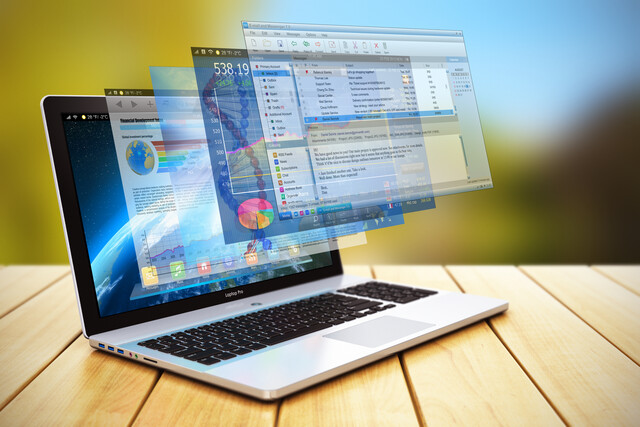Assertiveness Training
Find Your Voice, Command Your Space

8 Hours average completion time
0.8 CEUs
11 Lessons
12 Exams & Assignments
593 Discussions
11 Videos
13 Reference Files
84 Articles
Mobile Friendly
Last Updated December 2025
Imagine a world where your voice is heard, where your opinions carry weight, and where your desires are acknowledged and respected. Picture yourself walking into a room with an air of confidence so palpable that others are drawn to your presence. This is not just a dream or a distant fantasy; it is a reality that awaits you with our transformative Assertiveness Training course.
In today's fast-paced world, many grapple with the unspoken challenge of finding their footing in personal and professional interactions. Too often, individuals succumb to the pressures of others, whether out of fear of conflict or simply because they lack the skills to express their needs clearly and confidently. If any part of you resonates with these struggles, then stop right here--this course is specifically designed for you, and it holds the key to opening doors you haven't even dared to knock on yet.
Welcome to a journey of self-discovery and empowerment, where you'll find the right balance between passivity and aggression. Each module weaves an intricate tapestry of insights and techniques that guide you toward mastering the fine art of assertiveness. This is not a mere set of lessons; it is an immersive experience that reshapes how you perceive yourself and others. You will evolve, not just in knowledge, but in a deeply personal and profound way, fundamentally changing how you navigate life's myriad interactions.
We begin this journey by uncovering the essence of assertiveness, debunking myths that have held you back, and setting the stage for your transformation. Assertiveness is not just about demanding what you want--it is about expressing your needs with authenticity and respect. This foundational understanding acts as the cornerstone of your entire learning experience.
But it doesn't stop there. As you delve deeper, you'll encounter the crucial interplay between self-esteem and assertiveness. You'll learn how to nurture self-respect through tangible actions in your daily life, laying a robust groundwork upon which your assertive personality can flourish. With every practice, every exercise, you are sculpting a version of yourself that stands tall amidst any challenge.
Moreover, this course takes a unique approach to understanding your individual tendencies. Through a journey into your personality traits, you will identify your natural strengths and leverage them to build confidence in your assertive capabilities. Along the way, engaging communication techniques are demystified, enabling you to express your ideas with clarity and purpose. The skills acquired here are not just theoretical--they are actionable, empowering you to navigate both tongue-in-cheek office dynamics and delicate personal relationships.
A pivotal part of your training involves embracing and skillfully handling conflict. We equip you with the art of turning disagreements into collaborative conversations. No longer will you shy away from confrontations or let fear hamper your interactions. Instead, you will masterfully steer through conflicts with grace and authority, emerging stronger and more resilient.
The ripple effects of assertiveness extend well beyond interpersonal communications. By setting clear goals and learning how to pursue them assertively, yet adaptively, this course ensures that your aspirations are not a mere afterthought. They become a driving force in your life, propelling you toward success and satisfaction.
Finally, we emphasize that assertiveness is a lifelong endeavor--a journey, not a destination. You'll learn how to graciously handle mistakes and continue growing, embracing new experiences and nurturing relationships along the way.
The Assertiveness Training course isn't just about improving one aspect of your life; it paves the way for a comprehensive overhaul that touches every interaction and every decision you face. It's about laying claim to the life you deserve, one where your presence is felt, your opinions valued, and your goals achieved. Join us, and take the first step toward a more assertive, fulfilling life--because your potential deserves nothing less. Enroll today, and redefine who you are capable of becoming.
- Enhanced self-expression
- Confidence in interactions
- Stronger self-esteem
- Collaborative problem-solving
- Improved conflict resolution
- Healthy boundary setting
- Emotional intelligence
- Goal-setting proficiency
- Effective communication strategies
- Resilience in challenges
-

Etiquette for Children and Teens
-

Building Self Esteem
-

Slack
-

Leadership and Supervision
-

Understanding Addictions
-

Disaster Preparedness 101
-

Leadership Skills for Managers
-

Mediation 101
-

Procurement Management
-

Kaizen 101 - An Introduction
-

Building Self-Esteem in Children
-

SalesForce 101
-

Team Building 101
-

Depression Management
-

Project Management 101
-

Anger Management Techniques
-

Child Safety for Parents
-

Confidence Building
-

Etiquette 101
-

Community Development 101
-

Resolving Workplace Conflict
-

The Art of Setting Goals
-

How to Run an Effective Help Desk
-

Running Effective Meetings
-

Event Management Course Bundle